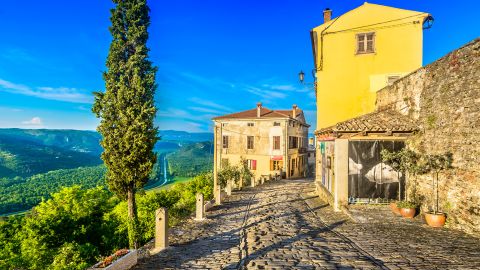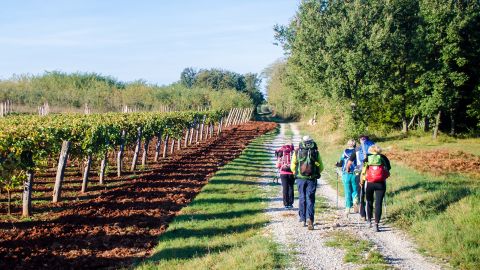Istria and the Kvarner Gulf: Croatia’s secret beaches and mini Venices
Editor’s Note: Sign up for Unlocking the World, CNN Travel’s weekly newsletter. Get news about destinations opening, inspiration for future adventures, plus the latest in aviation, food and drink, where to stay and other travel developments.
CNN
—
Head to Croatia’s northern Adriatic coast to discover some of the country’s most captivating regions. While Dubrovnik and other parts of southern Dalmatia get the lion’s share of attention, the Istrian peninsula and the neighboring islands and coastal ports of the Kvarner Gulf reveal other sides of Croatia’s rich culture and history.
In fact, there’s almost too much history to absorb – ancient Greeks and Romans, Venetians, Austro-Hungarians and Italians have all left their mark on the region’s architecture, the language and the food.
Ah, yes, the food. Truffles, olive oil and deliciously juicy oysters and mussels in Istria, fabulously fat langoustines in the Kvarner Gulf, gorgeously flavored lamb from Cres – and they all go beautifully with Istrian malvazija whites and teran reds, and a crisp white žlahtina from Krk.
When you’re not exploring ancient Roman ruins, Venetian villages and Habsburg towns, you’re basking on the hundreds of beaches that run along Istria’s long coastline to the neighboring Opatija Riviera and the shores of the Kvarner Gulf. Then hop on a ferry to roam the islands of the gulf – Krk, Cres, Lošinj and Rab – each accessible from the other, but all demanding a lingering look.

Work your way along the heart-shaped coast of the Istrian peninsula and you’ll wonder if you strayed across the Italian border by mistake. At various points in its long history, Istria was part of the Roman, Venetian and Habsburg empires – as well as Italy itself until after the Second World War – and you can see and taste this legacy everywhere.

In Pula at the peninsula’s southern tip, you’ll see one of the world’s best-preserved Roman amphitheaters, an atmospheric setting for concerts and the Pula Film Festival. Along the western coast is the impossibly beautiful port of Rovinj – or Rovigno, as it’s also known in this bilingual town. Its Venetian-style townhouses squeeze into narrow alleyways and tiny squares in the medieval old town where, at some point, you’ll find yourself on the cobbled steps of Grisia, one of its prettiest lanes. Taking one of the boats that regularly hop across to the small island of Sveta Katarina reveals the best view of the city.

Head inland and you enter Istria’s world of hilltop medieval villages, rolling vineyards and truffle forests. Clinging to the hillside rising above vineyards is medieval Motovun, one of the most attractive bases from which to explore the area. From here it’s a short drive to Grožnjan, scene of summertime outdoor concerts and a place to browse the artists’ studios…
Read More: Istria and the Kvarner Gulf: Croatia’s secret beaches and mini Venices
